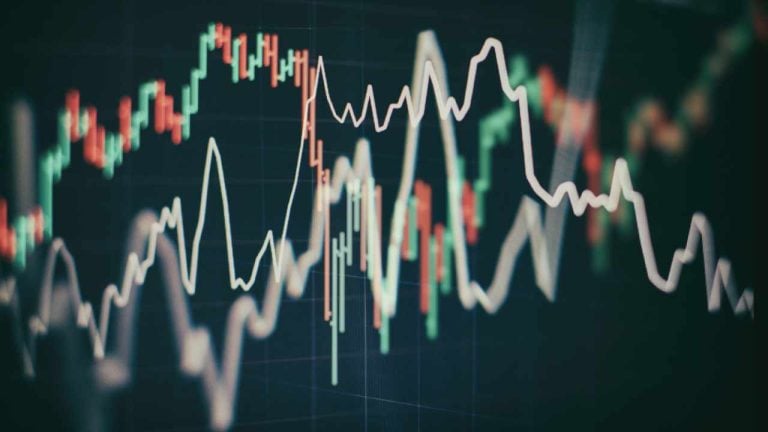
Top crypto exchange Binance has seen its market share plunge in recent weeks amid regulatory issues in the United States, according to crypto data provider Kaiko. Kaiko notes in a recent newsletter that Binance lost 16% of its market share in just the past two weeks. The firm notes that the decline occurred in part […]
The post Binance and Coinbase’s Market Share Slumped in Q1 As Regulators Targeted Crypto Giants: New Report appeared first on The Daily Hodl.

Binance’s market dominance fell largely due to its decision to end zero-fee trading for some trading pairs and not the CFTCs lawsuit, says Kaiko.
The dominance of cryptocurrency exchange Binance in trading volume market share has slipped over the past two weeks following a lawsuit from the United States commodities regulator and its decision to halt some zero-fee trading.
In an April 4 newsletter blockchain analytics platform Kaiko reported Binance “lost 16% market share of trade volume,” with its market share at 54% as of the end of Q1.
The U.S. Commodity Futures Trading Commission (CFTC) sued Binance on March 27 alleging it flouted regulatory compliance through violations of derivatives laws by offering trading to U.S. customers without registering.
Kaiko said Binance still takes in more volume than the rest of its combined competitors but its March 15 decision to end zero-fee spot and margin trading for 13 trading pairs including BNB (BNB), Bitcoin (BTC) and Ether (ETH) trading pairs with multiple fiat currencies and stablecoins largely contributed to the firm’s downfall.
“Overall, Binance’s excess volume largely vanished with the end of zero-fee trading, which was reflected in an even dispersal in market share among the remaining exchanges,” Kaiko reported.

Kaiko explained part of this fall was alleviated by its U.S. arm, Binance.US, which managed to triple its market share over the quarter from 8% to 24%.
Binance didn’t fall excessively in every domain though, the exchange managed to maintain its derivatives dominance, only giving up 2% market share over the last quarter.
Kaiko explained that the fall in trading volume figures was influenced mostly by the end of zero-fee spot trading as opposed to the CFTC lawsuit:
“The trend is quite different when looking at derivatives volumes: Binance only lost about 2% of market share for perpetual futures trade volume. This suggests that the majority of market share was lost purely due to the end of zero-fee spot trading, rather than trepidations around a lawsuit.”
The market share fall to 54% comes as Binance was one of the “big winners” of the FTX fiasco which saw its market share in trading volume rise to 65% during the last quarter of 2022:
“Binance’s market share increased from 50% to 65% after November 2022, while OKX saw its market share increase from under 10% to 17%. Bybit and the three smaller exchanges Huobi, Bitmex and Deribit, on the other hand, saw their market share decline.”
Over the last quarter, Upbit was the only crypto exchange to reclaim a “significant share” in trading volume of the 17 trading platforms that Kaiko analyzed.
Related: DEXs growing faster than CEXs but Binance still sees 171M visitors in a month
In light of recent regulatory pressures, the banking crises and the catastrophic collapse of FTX, many reports have observed a growing trend towards decentralized alternatives and self-custody wallets.
Bitcoin and Ether left centralized exchanges in record numbers following the fall of FTX. The daily trading volume of decentralized perpetual exchanges also reached $5 billion in November 2022, the most since Terra Luna Classic (LUNC) and its connected TerraClassicUSD (USTC) stablecoin collapsed in May 2022.
Trading volumes on the decentralized exchange Uniswap are now rivaling that of crypto exchanges Coinbase and OKX but is still only a fraction of the size processed by Binance.
Magazine: Can you trust crypto exchanges after the collapse of FTX?

Kaiko CEO Ambre Soubiran said that Hong Kong’s friendly approach may just see the city become the “center of gravity” for crypto trading and investments.
The U.S. government's frosty approach to cryptocurrency regulation could ultimately see the industry’s “center of gravity” shift to Hong Kong, says Ambre Soubiran, the CEO of Paris-based institutional crypto market data provider Kaiko.
The U.S. has been at the forefront of the crypto sector for quite some time, however, with the government seemingly adopting a regulation by enforcement approach, there is a growing feeling by some that a significant amount of companies, developers and investors will soon flock elsewhere to work in friendlier environments.
1 million tech jobs are at risk of going overseas. As the U.S. goes down a path of regulatory uncertainty, the EU, UK, UAE, Hong Kong, Singapore, Australia, and Japan are all creating environments for crypto to flourish so that they can capitalize on the next wave of innovation. pic.twitter.com/2UMkFxajcM
— Coinbase (@coinbase) March 29, 2023
Speaking with the Wall Street Journal on April 1, Soubiran suggested that the recent crackdown on crypto in the U.S. will inadvertently help Hong Kong in its goal of becoming a major crypto hub:
“The U.S. being more stringent these days than ever on crypto and Hong Kong regulating in a more favorable way…is going to clearly shift the center of gravity of crypto assets trading and investments more towards Hong Kong.”
“We want to be where our clients are,” she added.
While the U.S. government has become increasingly aggressive towards crypto since the collapse of FTX in November — with Senators such as Elizabeth Warren even recently stating that they are building an “anti-crypto army” — Hong Kong has been pushing in the other direction.
“This industry we’ve been trying to destroy, that’s grown to a trillion dollars in value, and that rallied 30% as our banking system required a $2 trillion backstop, and in 10 years added 10,000s of American jobs…
— Ryan Selkis (@twobitidiot) March 21, 2023
Has no value or good qualities.”
-The White House
The Hong Kong government initially outlined plans in January to become a hub by rolling out progressive regulation to support high-quality crypto and fintech firms in 2023.
While the regulation is yet to be fully ironed out, Hong Kong’s Securities and Futures Commission (SFA) proposed a crypto licensing regime on Feb. 20, focused on providing consumer protections without stifling innovation.
So far, more than 80 virtual asset-related firms have expressed interest in setting up shop there, according to a March 20 speech from Hong Kong’s Secretary for Financial Services and the Treasury, Christian Hu.
He also noted that 23 crypto firms in particular have already indicated that “they planned to establish their presence.”
Adding to the positivity surfacing from the special administrative region of China, Bloomberg reported on March 28 that the Hong Kong Monetary Authority and SFA are set to hold a joint meeting on April 28 to help crypto firms set up domestic banking partnerships.
Make Hong Kong Great Again!!! pic.twitter.com/K8FV55R1cb
— Arthur Hayes (@CryptoHayes) March 28, 2023
Chinese banks such as Shanghai Pudong Development Bank, the Bank of Communications Co. and Bank of China Ltd., have reportedly either started offering banking services to crypto firms in Hong Kong or made inquiries with crypto firms.
Related: Hong Kong fund plans to raise $100 million for crypto investment
Soubiran also revealed in mid-March that Kaiko itself, is looking to relocate the headquarters of its Asian-Pacific unit from Singapore to Hong Kong, in response to the country’s friendly crypto stance.
“What we’re seeing is a clear support for more clarity on the regulatory framework in Hong Kong,” she told Bloomberg in an interview, adding that “while we’re seeing an increased attractivity of Hong Kong in the region, we are relocating.”
Related: Asia Express: US and China try to crush Binance, SBF’s $40M bribe claim

Debtors jumped on the opportunity to grab a discount on their loan repayments when USDC and DAI de-pegged from the dollar.
The depegging of USD Coin (USDC) and Dai (DAI) from the United States dollar prompted a frenzy of loan repayments over the weekend, allowing debtors to save a total of more than $100 million on their loans.
Following the collapse of Silicon Valley Bank on March 10, the USDC price dropped to lows of $0.87 on March 11 amid concerns about its reserves being locked at SVB.
MakerDAO’s stablecoin DAI also de-pegged briefly, going as low as $0.88 on March 11, according to CoinGecko.
The depegging, in the backdrop of broader crypto turmoil, led to more than $2 billion in loan repayments on March 11 on decentralized lending protocols Aave and Compound — with more than half made in USDC, according to a report by digital assets data provider Kaiko.
Another $500 million in debts were paid in DAI on the same day, it noted.

This tapered off as both USDC and DAI started heading back toward their peg. The following days did not have anywhere near as many repayments, with a rough total of only $500 million in loan repayments across Tether (USDT), USDC, DAI and other coins on March 12, and roughly half of that on March 13.
Blockchain analytics firm Flipside Crypto estimates that USDC debtors saved $84 million as a result of paying back loans while the stablecoin was de-pegged, while those using DAI saved $20.8 million.
“Overall, DeFi markets experienced two days of huge price dislocations that generated countless arbitrage opportunities across the ecosystem, and highlighted the importance of USDC,” the Kaiko report said.
Related: USDC depegged, but it's not going to default
The depegging of USDC also led MakerDAO to reconsider its exposure to USDC, as crypto projects incorporating DAI in their tokenomics suffered losses due to a chain reaction.
Circle’s USDC began its climb back to $1 following confirmation from CEO Jeremy Allaire that its reserves were safe and the firm had new banking partners lined up, along with government assurances that depositors of SVB would be made whole.
According to CoinGecko data, USDC was sitting at $0.99 at the time of writing.
 Most remote workers in Latam prefer to get paid in crypto, according to the latest report from the Deel Lab for Global Employment. The reasons behind the finding are said to be diverse, but include the instability of some of the local fiat currencies, and the influence of high levels of inflation in the region. […]
Most remote workers in Latam prefer to get paid in crypto, according to the latest report from the Deel Lab for Global Employment. The reasons behind the finding are said to be diverse, but include the instability of some of the local fiat currencies, and the influence of high levels of inflation in the region. […] Bitcoin’s volatility has fallen below that of the Nasdaq and the S&P 500, according to crypto data provider Kaiko. Compared to equity markets, cryptocurrency markets have become less reactive to volatile macro events, including high inflation, an appreciating dollar, rising interest rates, ongoing war, and the energy crisis, the firm explained. ‘Bitcoin Volatility Is at […]
Bitcoin’s volatility has fallen below that of the Nasdaq and the S&P 500, according to crypto data provider Kaiko. Compared to equity markets, cryptocurrency markets have become less reactive to volatile macro events, including high inflation, an appreciating dollar, rising interest rates, ongoing war, and the energy crisis, the firm explained. ‘Bitcoin Volatility Is at […]
Global rate hikes are putting downwards pressure on asset prices, but Bitcoin is starting to outperform commodities and tech stocks.
Senior commodity strategist at Bloomberg Intelligence, Mike McGlone, stated October has historically been the best month for Bitcoin (BTC) since 2014, averaging gains of about 20% for the month, and that commodities appearing to peak could imply that Bitcoin has reached its bottom.
In an Oct. 5 Bloomberg Crypto Outlook report, McGlone says while the rise of interest rates globally is putting downwards pressure on most assets, Bitcoin is gaining the upper hand when compared with commodities and tech stocks like Tesla, with the report noting:
“When the ebbing economic tide turns, we see the propensity resuming for Bitcoin, Ethereum, and the Bloomberg Galaxy Crypto Index to outperform most major assets.”
McGlone notes that Bitcoin has its lowest ever volatility against the Bloomberg Commodity Index, which tracks the price movements of global commodities such as gold and crude oil, and suggests that historically Bitcoin volatility is more likely to recover as compared to commodities when the crypto heads to new highs.

McGlone suggested the second half of 2022 could see Bitcoin “shift toward becoming a risk-off asset, like gold and US Treasury’s,” following low volatility throughout September and a potential peak in commodity prices.
In the past, Bitcoin has been highly correlated with tech stocks, with its volatility making it a risky asset that traders are likely to sell in an environment where investors are looking to reduce risk.
Related: 5 reasons why Bitcoin could be a better long-term investment than gold
Kaiko Research data released on Oct. 4 supports the notion that Bitcoin may be transitioning to acting more like “digital gold,” with Bitcoin’s correlation to gold hitting its highest level in more than a year at +0.4 following a strengthening of the United States dollar as interest rates rise.

A correlation of +1.0 means that the movement between two different assets is synonymous, for example a 10% increase in gold would be matched by a 10% increase in Bitcoin should the two assets have a correlation of +1.0.
 The latest data debrief issued by Kaiko, a provider of digital assets market data, has found that while there is retail movement in Latam regarding crypto assets, most liquidity is directed to “real world” use cases. Among these activities are remittances, stablecoin-based yield generating investment options, and also payments, with Bitso and Mercado Bitcoin being […]
The latest data debrief issued by Kaiko, a provider of digital assets market data, has found that while there is retail movement in Latam regarding crypto assets, most liquidity is directed to “real world” use cases. Among these activities are remittances, stablecoin-based yield generating investment options, and also payments, with Bitso and Mercado Bitcoin being […]